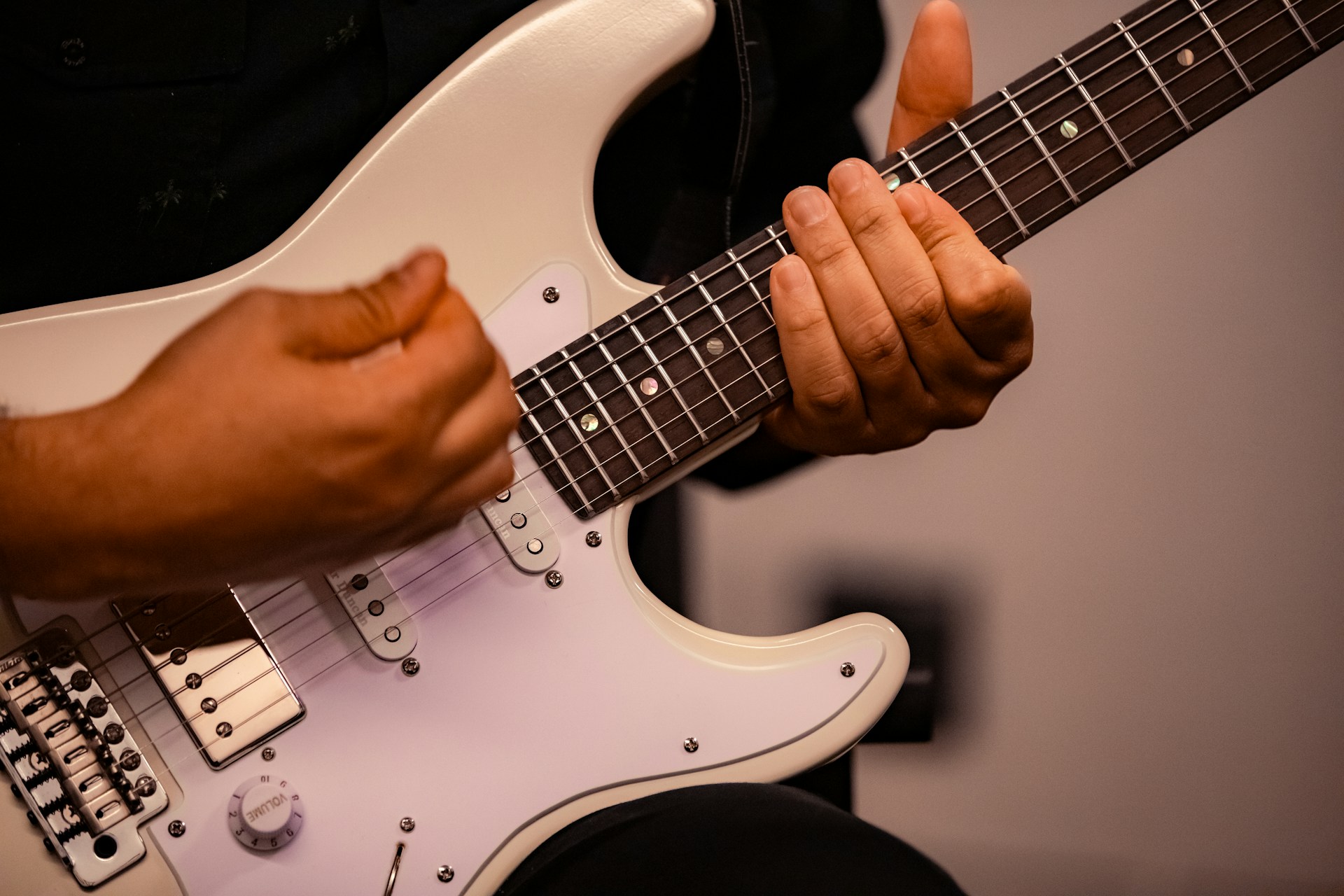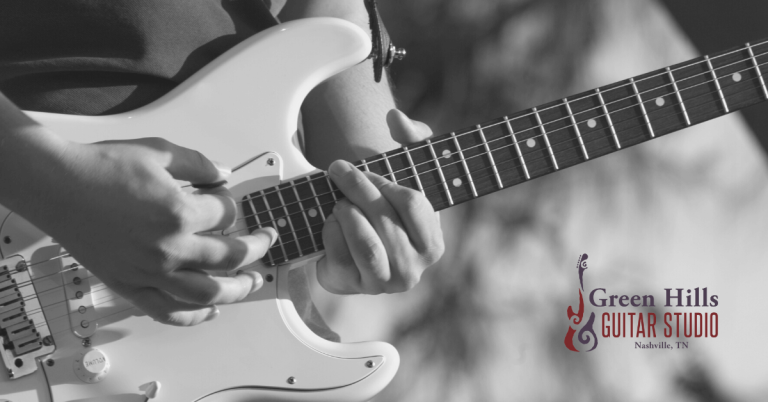Practice Strategies To Improve Your Timing and Groove
Some guitar players can blaze through scales or pull off complicated chord voicings—but still sound like they’re missing something. The feel isn’t quite there. Their timing and groove are off. It doesn’t move the way it should. This is the subtle, often unspoken skill that separates competent players from compelling ones.
If you feel like your playing is technically sound but lacking that rhythmic glue that makes music feel natural and alive, you’re not imagining things. Groove and timing aren’t just part of music—they’re its engine. And they don’t come from talent. They come from repetition, intention, and the right kind of practice.
In this article, we’ll cover practical, no-nonsense strategies to improve your timing and groove on guitar. Whether you’re strumming acoustic patterns or trying to lock in with a rhythm section, these techniques will help you develop a tighter internal pulse and play with more confidence.
1. Use the Metronome Differently
Most guitarists use the metronome like a drill sergeant: every beat, every time. But there’s more nuance to this tool than most players realize.
Try setting your metronome to half-time. If you’re playing in 4/4 at 100 BPM, set it to click only on beats 2 and 4 (effectively 50 BPM on the backbeat). This simulates the feel of a snare drum in a groove and forces you to internalize the rest of the beat.
Or go further: set the metronome to click only on beat 4. Now you’re really accountable. It’ll feel strange at first, like walking a tightrope with no safety net. But that tension builds awareness.
2. Record Yourself and Listen Back
Your timing and groove might feel locked-in while playing, but recordings tell the truth. Use your phone or DAW to record yourself playing to a metronome or backing track. Then listen back critically.
Are your chord changes dragging behind the beat? Are your lead lines rushing? This isn’t about self-criticism—it’s about noticing patterns.
Try this: record yourself strumming a basic chord progression along to a drum loop. Then clap or tap along with the recording. If it feels hard to stay in sync, your groove may need tightening.
3. Use Drum Loops and Backing Tracks
Metronomes help with subdivision and consistency, but they lack vibe. Drum loops and backing tracks add feel, swing, and musical context. Practicing with them trains you to lock into a real groove.
Websites like Drumeo or YouTube channels like “Quist” offer hundreds of loops across genres. Want to tighten up your funk chops? Loop a James Brown-style groove. Need help with your shuffle? Try a Texas blues track.
4. Isolate and Subdivide
If you struggle with rhythm-heavy passages, isolate them. Don’t just loop the full part—zoom in. Figure out where the subdivision falls.
Count out loud: “1 e & a, 2 e & a” or “1 & 2 & 3 & 4 &.”
Use a metronome to emphasize different subdivisions:
- Set it to eighth notes or sixteenth notes.
- Clap or tap the subdivisions while playing the part.
- Mute the guitar strings and strum rhythmic patterns, focusing only on timing.
This builds rhythmic fluency and accuracy at a microscopic level.
5. Practice With Movement
Groove isn’t just a mental concept—it’s physical. If your body isn’t engaged, your timing will suffer.
Nod your head. Tap your foot. Sway. Let your body embody the pulse. Legendary bassist Victor Wooten often says that groove lives in your body first. Your fingers just follow.
Try this: play a simple chord progression and focus on swaying with the beat. If you lose the groove, stop. Reset your body first, then resume playing.
6. Play With Others
There’s no substitute for live interaction. Playing with others—even virtually—exposes you to different time feels and forces you to listen deeply.
You’ll learn how to adapt, adjust, and hold your ground. You might discover that your sense of time rushes when you’re nervous, or drags when you’re unsure. That’s okay. The fix comes through repetition and awareness.
Join a jam session, take part in an online ensemble, or just play along with a friend on Zoom. You’ll develop timing in ways you can’t replicate solo.
7. Use Call and Response Exercises
This is a fun way to sharpen your groove and deepen your musical instincts.
Play a short rhythmic phrase or riff. Then pause and repeat it. Next, change it slightly. You’re essentially having a conversation with yourself.
Even better: use a looper pedal to layer grooves. Play a rhythm guitar part, then solo over it while trying to match the feel. Are you locking into the groove you just created? Or fighting it?
8. Play Along With Groovy Records
There are few better teachers than great records. Pick a rhythmically tight album and play along. Don’t just learn the chords—mimic the strumming patterns, the phrasing, the push-and-pull.
Here are a few suggestions to get you started:
- Bill Withers – Live at Carnegie Hall (incredible feel throughout)
- The Meters – Rejuvenation (tight funk groove)
- John Mayer – Continuum (great pop-funk phrasing)
- Tom Petty – Wildflowers (laid-back but locked-in feel)
9. Experiment With Playing Ahead or Behind the Beat
Once your timing is solid, push yourself to play just ahead of or just behind the beat—on purpose. This kind of phrasing creates feel and personality in your playing. Try recording a simple groove both ways and compare how each version feels.
This technique is subtle, but pros use it all the time to shape a song’s momentum. Practicing this gives you finer control over the emotional impact of your rhythm.
10. Drill One-Bar Grooves
Pick one bar of a rhythmic pattern and loop it over and over. This could be as simple as a muted strum on beats 2 and 4 or a syncopated funk groove.
Hint: James Brown records are great for this exercise.
Keeping a tight, consistent feel over a single bar trains your internal clock and groove at a deeper level than running through long progressions. Add a drum loop for even more feel-based feedback.
11. Practice the Power of Silence
Groove isn’t just about the notes—it’s about the space between them. Some of the tightest, most memorable rhythm parts rely on silence as much as sound. Think of the clipped, syncopated funk lines in “Superstition” by Stevie Wonder or the sparse rhythmic pocket in “Use Me” by Bill Withers. What you don’t play can be just as important as what you do.
Try this exercise: play a simple strumming pattern and mute your strings on every third beat. Let the silence hang. Feel it. Then bring it back to a full groove and notice the difference.
Another option: strum on beat 2 of every bar only, and try to keep that locked in over a looped groove. If it sounds wrong or unstable, you’re rushing or not giving the silence enough weight.
“The real power is in the rests. That’s where the music breathes.”
– Quincy Jones
Groove isn’t just about the notes—it’s about the space between them. Practice leaving rests, muting notes, or creating syncopated gaps in your rhythm playing.
Try this: In this practice session, we work through fast 4 chord changes in the key of G at 85 bpm. Focus on clean movement, muting unnecessary strings, and landing with intention—while keeping your rhythm tight. Notice how the space created gives the groove momentum and purpose.
Final Thoughts About Timing and Groove
The truth is, no one is born with perfect time. It’s something you build, slowly and deliberately, through attention and effort. The groove isn’t just in the hands—it’s in the ears, in the heart, in the body. And once you start listening for it, once you really tune in, you’ll start to feel it everywhere.
Practice these strategies consistently, and your playing won’t just sound better. It’ll feel better.
And when it feels good, people listen.
Need Help Dialing in Your Groove?
Want help improving your groove, refining your timing, and playing with more confidence? Sign up for guitar lessons at Green Hills Guitar Studio. We offer in-person instruction in Nashville and remote lessons anywhere in the world.






